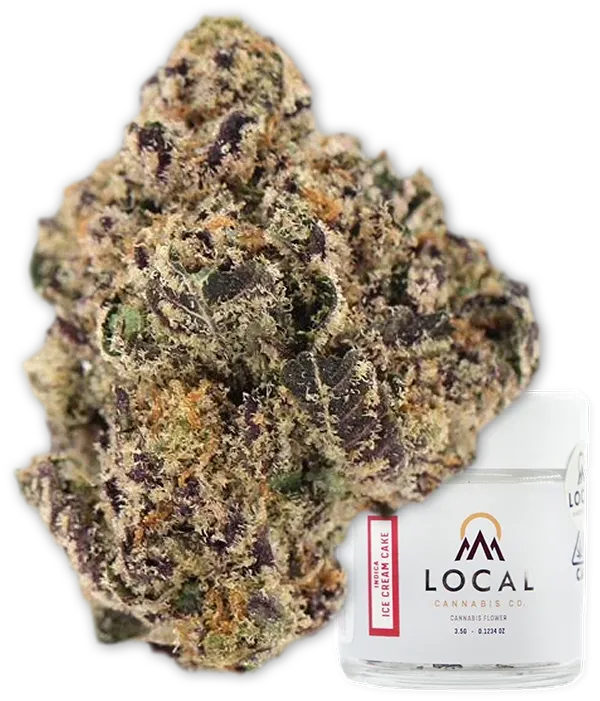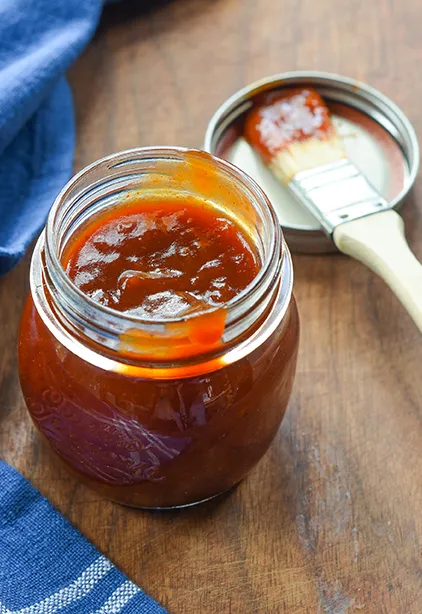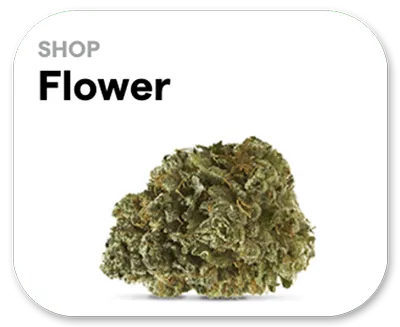This month we welcome Dr. Page Crow, DC, owner and operater of Crow Chiropractic & Acupuncture. Page is not only an amazing chiropractor, but is also well versed in holistic approaches to healing the entire human body.
The foundation of human health begins in the digestive & elimination organs. The ability to break-down food, absorb nutrition, then eliminate waste is absolutely essential for all other body processes. If stress & inflammation are chronic in the gut tissue, recognizable patterns of degeneration will occur. Many folks live & endure stress which creates dis-eases of the gut, including esophageal erosion, stomach upset, indigestion, irritable bowel syndrome, colitis, diverticulitis and more. The worst pathology leads to the bloody degeneration known as Crohn’s disease. This is when folks are pooping hot\runny feces 20x\day. They are getting several feet of intestines cut-out of their body. A feces bag is glued or strapped to their stomach that catches poop waste as it exits out a hole on the front of the body that is permanently created by the medics. This is an awful fate for anyone who ends-up this way. It doesn’t have to be like this.
Many health care providers say these gut issues are “genetic”. What that is supposed to mean is, “It’s not your fault.” and “There is nothing you can do about it.” Nothing could be further from the truth. Anyone can change their minds, learn about their body and begin making healthy choices that reverse severe dis-health. The moment you stop doing things that are making you sick and start doing things that make you well, you can change your mind, your body, your health, and your life. What it takes is “doing the many things” that build health. Healthy routines create better health. What we do over & over builds health with time on our side.
The purpose of this paper is to describe the function and many of the disorders involving the esophagus, stomach, small & large intestine. We will discuss what Western medicine has done for these conditions. We will also discuss home self-health routines for body maintenance, treatment and prevention of gut issues. We can also discuss how Cannabis medicine can potentially help these inflammatory and degenerative conditions of gut tissue.
THE ESOPHAGUS
The esophagus is the muscular tube that connects the mouth to the stomach. The brain\nervous system controls & coordinates the smooth muscular contractions that move food from chewing & the mouth, down the esophagus, to empty in the stomach. Between the esophagus & stomach is a valve that is supposed to open only momentarily to allow food into the stomach, but not the other way. This valve is called the “cardiac valve” (because of the location close to the heart) Instead, many doctors call this the “esophageal\stomach valve”, because it makes more sense and it is easier to understand the anatomy & function.
If nerve & muscle tone & control are lost in this tissue, the esophageal\stomach (cardiac) valve becomes weak. The esophageal\stomach valve will not remain closed. This problem lets stomach digestive contents & juices back-flow into the distal esophagus. The digestive acid from the stomach will aggravate & break-down the tissue of the distal esophagus, causing pain & degeneration. The esophagus does not have the mucus-producing glands that protect against acid erosion, like the stomach. Western medical doctors call this condition “gastro-esophageal reflux disease (GERD)”, or “heartburn”, even though this suffering has nothing to do with the heart. Many drugs are sold on television that attempt to neutralize stomach acids, for temporary relief. The problem with this method of treatment is that the stomach & brain recognize the acid level is low in the stomach when the drugs are taken and the body goes about making more acid to return to normal. The problem keeps coming-back and more drugs are sold. Stronger anti-acid drugs are prescribed by the doctors, continuing the cycle. These drugs do not cure the degenerative condition in the distal esophagus. They only relieve symptoms temporarily.
When the “heartburn” condition persists chronically, further degeneration of the distal esophageal tissue occurs. Now the inflammation and degeneration is called “esophagitis” (inflammation of the esophagus) or worse, esophageal “cancer”. Note that the final stages of tissue degeneration is called “cancer”. At this point, the breakdown of tissue will require surgical removal of the affected area. Surgeons cut-out the rotten, acid-destroyed esophagus tissue and sew it back-up to the stomach. The problem often returns, because the cause for stomach valve weakness has not yet been addressed. Often, patients that develop this problem do little to take care of themselves, resulting in further degeneration and eventual loss of life, due to this esophageal “cancer”. Indeed, distal esophageal erosion is a serious health problem.
In natural health care studies, we teach the patient the “cardiac valve” is actually a stomach\esophagus valve and that “heartburn” has nothing to do with the heart. We educate the patient to increase their water intake. This “softens” the acid in the stomach, but does not change the pH, thus avoiding triggering the stomach to make more acid. We teach that acid neutralizers and acid blocker drugs create only temporary relief, and later cause a worsening of symptoms as the acid levels rebound in the stomach.
Next, it is time to learn about two great natural herbal medicines that are well-known to reduce inflammation in the esophagus and stomach. Aloe Vera juice, taken internally, by the mouth, down the throat, “coats & soothes” this sensitive endothelial tissue. We teach folks they can buy organic Aloe Vera juice by the gallon and store it in their refrigerator. A person drinks half a coffee cup of Aloe Juice twice a day, morning and evening. It’s that simple. Aloe Vera juice tastes neutral, slightly citrus. It is not unpleasant. A person can immediately feel the relief when they consume Aloe Vera juice and the juice truly heals the gut and skin. Aloe Vera is inexpensive and can be used with no contraindications. It is just food. Aloe positively affects all levels of the gut and heals all tissues it comes into contact with.
Another great herbal medicine is Peppermint. In the plant kingdom, Peppermint is a top-ten herbal remedy. Peppermint chemistry is anti-inflammatory. When consumed hot or cold as tisane (tea), Peppermint reduces inflammation in all the tissues it comes into contact with. A person can immediately feel the relief in their esophagus & gut when they consume Peppermint tisane (tea). This tisane is very pleasant, easy to drink and has no contraindications. Kids easily consume Peppermint tisane when it is cold and slightly sweetened. A person can drink as much Peppermint tisane as they want with all positive effects.
Chiropractors teach the lesson to patients about nervous system tone & control. The brain & nerves control the esophagus & stomach, as well as all tissues in the body. It has been proven time & again that dysfunction in the spine, @ the level of the nervous system that goes to the distal esophagus and stomach, will often cause failure to maintain tone of the muscles that control movement of food and the opening\closing of the esophageal valve. Furthermore, the nervous system, when compromised, fails to maintain and heal damaged tissue from acid erosion. If the body cannot heal itself, degeneration will occur. Chiros teach specific spinal adjusting, directed @ the level of the spine that affects these body functions, positively affects restoration of health and improvement in tone & control. The stomach\esophageal valve is strong enough to stay closed when it receives full nervous control. Maintenance chiropractic adjusting, not for back pain, instead for internal body organ control, is a successful tool.
THE STOMACH
The stomach’s role in digestion is the physical & chemical breakdown of foods. Many compounds are secreted into the stomach, including enzymes & acids, that will reduce chewed foods. The stomach stores foods & fluids until they are ready to be moved into the small intestine.
Disorders of the stomach include “gastroparesis”, when the muscles fail to move food out of the stomach and “cyclic vomiting syndrome (CVS)”, where the stomach routinely pukes back-up the contents. This is an especially dangerous condition, because stomach acid repeatedly contacts the esophagus, causing acid-degeneration and esophagitis. Many patients have pain or discomfort that is felt in the center of the abdomen above the belly button, called “functional dyspepsia”. Some examples of discomfort that are less painful are:
- Fullness
- Early satiety (feeling full soon after starting to eat)
- Bloating
- Nausea
There is no single motility disorder that explains all these symptoms, but about a third of patients with these symptoms have delayed gastric emptying (usually not so severe that it causes frequent vomiting), and about a third show a failure of the relaxation of the upper stomach following swallowing (abnormal gastric accommodation reflex). Half of the patients with these symptoms also have a sensitive\irritable stomach, which causes discomfort when the stomach is filled with even small volumes. These are all variations of dyspepsia or upset stomach.
Western medicine uses many drugs, in an attempt to chemically alter stomach function. These drugs reduce stomach acid and alter normal gut flora. The drugs are designed to be taken forever and potentially relieve symptoms.
A surgical procedure that cuts-out part of the stomach is currently a fad in Western nations. Also, Western doctors sometimes use a constriction band around the stomach, to reduce the size, in hopes of getting the patient to eat less and reduce weight. These surgical procedures are experimental and hazardous @ their worst. Many people have died from complications of stomach constriction or removal surgeries. These elective surgeries are not recommended by many doctors, despite their popularity.
To reduce stomach upset, pain, bloating & inflammation the first step is drink more water. Soda, coffee & beer are no substitute for water. The stomach and body need water to digest foods and balance acid. Indeed, many health problems with the gut & intestines heal simply by drinking more water like it was the medicine you truly needed. Water aids in digestion, absorption & elimination of foods. Chronically dehydrated people often lack the sense of thirst, compounding their lack of water. Water must be intentionally added to your diet every day.
The conditions of inflammation & dyspepsia improve with the use of Aloe Vera juice and Peppermint tisane (tea). Both fluids are safe to consume, reduce swelling & inflammation and have no contraindications for use. A half a coffee cup twice daily of Aloe Vera juice, night & day, has been shown to work on the sunburn inside your throat & stomach (inflammation). Peppermint medicine is a top-ten herbal remedy for reducing inflammation. You can drink it hot or cold. A child can be encouraged to drink Peppermint tisane if you chill it and add a bit of sweet leaf (Stevia).
The culinary spice known as Turmeric (aka Curcumin) is a medicinal herbal medicine. Turmeric has many health claims, it’s primary potential as an anti-inflammation compound is research proven and well known. People with systemic inflammatory disorders can consume Turmeric with no contraindications. A tablespoon or more of ground Turmeric powder can be worked into foods or drinks daily. There are many known health benefits from regularly consuming Turmeric as active & preventive medicine. This herb is often sold in capsules, but you can purchase bulk Turmeric powder @ considerable cost-saving and dose yourself with the ground powder. Turmeric is used in many Thai & Viet foods.
10 Proven Health Benefits of Turmeric and Curcumin
CANNABIS AS MEDICINE
Cannabis has been studied for anti-inflammatory use. The primary chemistry of cannabis, tetrahydrocannibinol, exerts biological actions upon the gastro-intestinal tract. Cannabis is anti-inflammatory and reduces nausea & vomiting. Sick people who have a hard time keeping food down do well and increase their appetite when they use cannabis as medicine.
Role of cannabis in digestive disorders
Cannabis and Turmeric as Complementary Treatments for IBD and Other Digestive Diseases
[Efficacy, Tolerability, and Safety of Cannabinoids in Gastroenterology: A Systematic Review]
Cannabinoid pharmacology and therapy in gut disorders
THE ENDOCANNABANOID SYSTEM
The endocannabinoid system are neurotransmitters & receptors that exist throughout the central & peripheral nervous system. They combine with neuroreceptors in all parts of the body, muscles & organs. These neurotransmitters influence and alter function and structure in all parts of the body. Potential functions that are influenced include brain function & memory, appetite, energy balance, metabolism and thermoregulation (thyroid function), mood, emotion, stress, the immune system, inflammation reduction, autonomic nervous system balance, pain relief, sleep and much more. It is present everywhere in the body that scientists have looked, including the digestive system. Disrupted endocannabinoid signaling has been associated with many disorders, including diabetes, hypertension, infertility, liver disease, and more. It has been known for some time that the brain can modulate the gut. The gut can also modulate the brain. Endocannabinoid biosynthesis and inactivation have been identified in the gastrointestinal system. Activation of CB1 receptors by endocannabinoids produces relaxation of the lower esophageal sphincter and inhibition of gastric acid secretion, intestinal motility, and fluid stimulated secretion. The endocannabinoid system in the small intestine and colon becomes over-stimulated during inflammation in both animal and human inflammatory disorders.
ENDOCANNABANOID OVERACTIVITY AND INTESTINAL INFLAMATION
THE SMALL INTESTINE
The small intestine is a section of the digestive system that receives & absorbs the broken-down food from the stomach. The stomach, pancreas & liver produce digestive fluids\chemicals that dump into the small intestine and further aid in digestion. The small intestine absorbs the food nutrition from the gut. There exists an extensive network of blood vessels, the mesentery, that surrounds the small intestine and draws food nutrition from the small intestine for use throughout the body. Much of that nutrition-rich blood is sent directly to the liver to be studied and altered by liver secretory chemistry. Many poisons we eat, like petrochemicals in our foods, are neutralized or stored in the liver. The small intestine is uniquely connected to these digestive organs and function perfectly under normal health. When conditions of inflammation are present, indigestion & bloating occur.
Disorders of the small intestine include inflammation, ulcers degeneration with bleeding, bacteria or yeast infection, irritable bowel disorder and advanced Crohn’s degeneration. Western medicine uses various drugs to treat these disorders and also cutting-out specific parts of the small intestine when they are severely damaged.
The small intestine is particularly sensitive to the chronic foods we eat. Junk in, junk out. If you have a poor diet, your body is prone to sickness, especially the gut. One particular disorder of the small intestine is Celiac Sprue. Many doctors report this is a small intestine hyper-inflammatory reaction to gluten, a component of wheat. Other doctors are critical of this theory, saying humans had the ability to eat breads & gluten for centuries and that gluten-sensitivity is a modern disease that arose around the same time that toxic pesticides & plant killers were sprayed on wheat & other products we ingest. The public is becoming aware of the poisons sprayed or added to foods. Whatever the cause, when the small intestine is chronically sick, it is a good practice to eliminate wheat and chemically-sprayed products from the diet.
THE LARGE INTESTINE
The three primary roles of the large intestine include absorption of nutrition from the food inside the gut-tube, absorption of water from the intestine and formation of poop, ready for elimination.
The large intestine can suffer from several disorders. Inflammation in the large intestine is variously called “colitis”, ulcerative colitis, irritable bowel syndrome, diverticulitis, Crohn’s degeneration or colon cancer. Often, these disorders are the same degeneration, just @ different places along the timeline of a persons’ life\health. The longer a body endures gut\intestine disorders, the worse they get. Sometimes, a human is so out-of-communication with their own body, they have no idea there is something wrong with them. They ignore their body for many reasons. Some folks do nothing for themselves until crisis sets-in.
The worst is Crohn’s disease. The small & large intestine is so swollen, bleeding and inflamed, the patient cannot tolerate food in the gut. Food is rushed through the body, with little digestion & absorption. These folks have “20 hot\bloody bowel movements\day”. :-/ They poop runny feces and blood.
When Western medicine is used for this disorder, the patient is prescribed strong steroid drugs. They are taught a restricted diet of easy foods. Often these diets are not sustainable in nutrition. They lack the quality of foods that heal the body. Many Crohn’s patients have large segments of their rotten digestive tract cut-out. The worse fate is hanging the poop-bag on the abdomen. A pint-sized plastic bag is temporarily glued to the front of the body. The large intestine is cut and routed out the front of the body. Poop and fluids dribble into this bag. The patient must remove, clear and reattach this device back onto their abdomen frequently. This is no way to live. Patients are programmed to “live with colostomy bag”. Maintenance and prevention of gut issues can prevent this awful fate. Many doctors are convinced Crohn’s disease is acquired, not genetic. Much can be done to prevent this disorder. Balancing gut function is essential.
The first, most important thing to do is teach the person they can be well. Often, folks do not know they can heal their own body. Education is key. Next, reduce inflammation. Crohn’s disorder has components of chronic irritation, inflammation, often infection, white blood cell response, tissue damage, bleeding and intense pain. When the inflammatory response is reduced, the patient can have relief. Water. Water. Water, like it was medicine. Water puts the fire out. Next, Aloe Vera juice, both ingested through the mouth and in this circumstance, used as an enema. Aloe puts the fire out inside the rectum & large intestine. A properly trained enema tech (your grandma) knows how to tip you upside down and fill the arse with Aloe Vera. Aloe soothes the pain immediately and provides mucus and chemical properties that heal large intestine tissue.
THE CANNABINIODS & TERPENOIDS
Cannabis is not new as an herbal medicine. Traditional Chinese Medicine has used Cannabis for millinia as one of their time-tested medicinal herbs for patients. The inhibitory effects of cannabinoids on intestinal inflammation, as well as on intestinal motility & diarrhea, increase the potential for their use in the treatment of inflammatory bowel disorders. Based on previous research, a clinical study with Cannabis in patients with chronic Crohn’s disease has been started at the University Hospital of Munich. Regarding the endocannabinoids, although the exact mechanisms of their anti‐inflammatory effects remain unknown, it is thought they might be effective in relieving a number of symptoms experienced by patients with IBD (irritable bowel disease), including nausea, anorexia, cramps, diarrhea, pain and inflammation. It appears that endocannabinoids might regulate the intestinal response to inflammation at three levels: (1) reducing the release of neurotransmitters that affect intestinal motility and secretion; (2) directly suppressing the production of proinflammatory mediators. (3) promoting epithelial wound healing. The use of Cannabis as medicine has been prohibited in the United States for decades. This herbal medicine has been researched and used by other countries, including China, Russia, Israel, Sweden, Germany, Mexico and others.
.webp)
















 Ingredients:
Ingredients:















